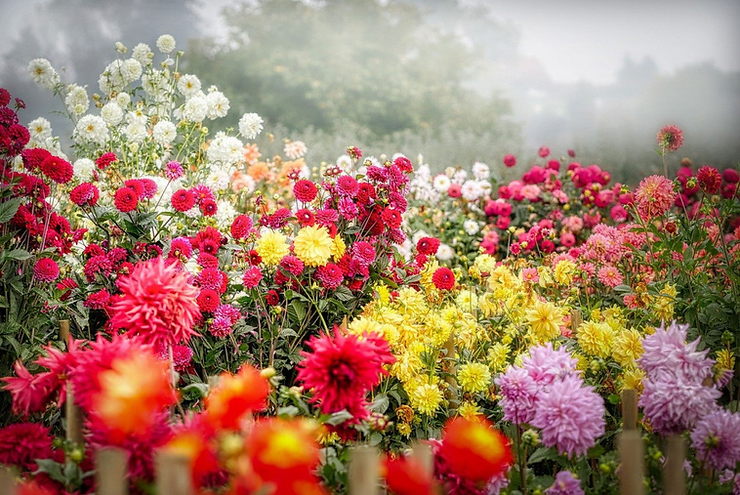Flowering Bulbs to Plant in the Spring – A Guide For Beginners
The Great Awakening! That’s what spring is to me. Gone are the cold days of February, and dreary, rainy, even snowy days of March. April and May are two of the loveliest months of the year. The world awakens with an array of colorful flowers to brighten the heart. Now is the time to get down and dirty and start planting flower bulbs. Fall may be the time for planting bulbs that need a dormancy state, but spring planting is for those bulbs that are ready to get the show on the road! Spring planting of flower bulbs will guarantee summer and fall beauty in your own backyard. Learn about gorgeous flowering bulbs you can plant right now.
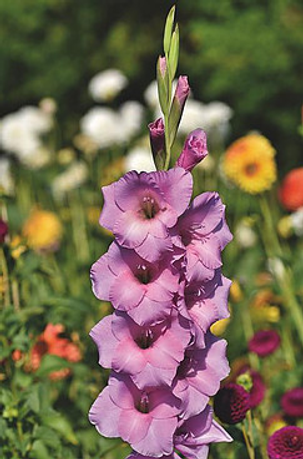
(Some of the links within this post are affiliate links on which I receive a small compensation from the sale of certain items with no added expense to you.)
(As an Amazon Associate I earn from qualifying purchases.)
Flower Bulbs, Corms, and Tubers
Spring planted bulbs are generally planted much more shallow than their fall counterparts like tulips and daffodils, and are therefore easier to plant. When the ground begins to warm up and the chance of frost is minimal, get outside and plant some bulbs. For stunning color through summer and fall, here are a few bulbs, corms, and tubers to purchase and plant from late April to mid- May.
TIP:
Go to your local nursery and purchase spent Easter flowers and plant them in your garden. Add a little bone meal at the base of the bulb, water well, and cover with good organic soil. DO NOT trim the leaves and stems even though they may look dingy and yellow. The bulb refuels and gets its nutrients for the winter and the next year’s blooms from these spent leaves. After they have completely died down and are quite dry and brown, then gently tug them off. If they do not come off easily, leave them alone until they dry out some more. Learn more about Easter flowers by clicking here.
Begonia
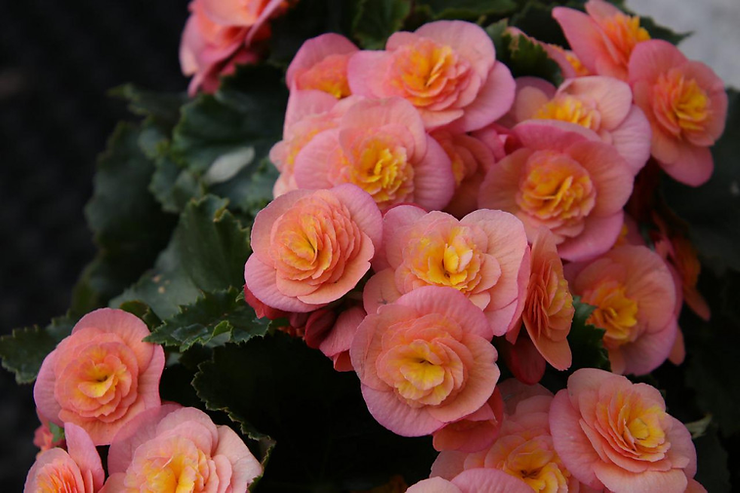
If you love Roses, then you’ll love Begonias. They come in a variety of colors including pink, orange, yellow, red and white and in singled, doubled or ruffled blooms. Begonias grow from 8 inches to 2 feet tall depending on the variety. Their delicate flowers and leaves add beauty to a dark, shaded area. Since they prefer a darker area, apartment dwellers whose balconies face the north and east will enjoy these bright cheery flowers.
They grow well in the ground or in pots, and prefer moist, well drained soil amended with organic matter. Begonias can even be brought inside for the winter and, with a little care, will bloom the entire season.
Dahlia
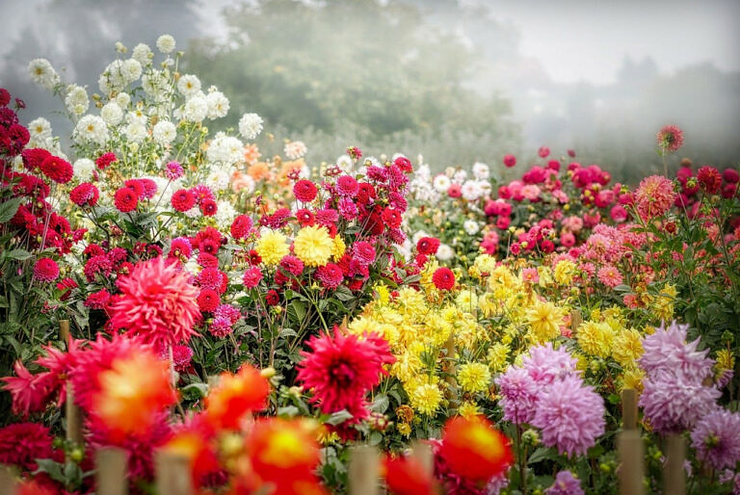
These cheery summer flowers make wonderful cutting flowers. Most Dahlias are grown from tubers, which is a bulb that is thin skinned like a potato, and are herbaceous perennial plants. Plant the tubers on their sides once the ground has become warm and easy to work with.
Dahlias grow well in full sun with between six and eight hours of continuous sunlight, and will flower all summer long. They prefer moist, well drained soil. Be sure the soil is well drained. If tubers sit in water they will become mushy and rot.
When you plant the tuber, if you have a tall variety insert a stake to support the plant once it begins growing. You will enjoy their color all summer and into early fall. Cut the stems frequently to promote more blossoms.
Gladiolus
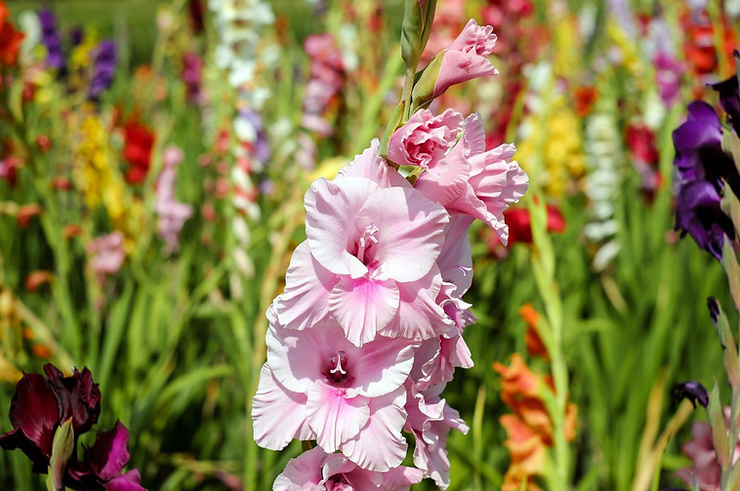
The National Gardening Bureau has declared 2022 the year of the Gladiolus!
A Gladiolus plant, often referred to as a “glad”, is in the iris family and grows from a corm. A corm is an enlarged bulb with a basal plate. The basal plate is where roots grow and where shoots and scales are attached. Offsets (or new bulbs) develop from the plates.
These stately, towering stalks can grow from two to five feet tall with sword-like leaves. However, the plant is quite compact and does not grow beyond one foot wide. The taller varieties are best grown in the back of the garden and will thrive when supported with stakes.
Gladioli come in an array of colors, from white, yellow, pink and lavender to rose, burgundy, purple and even green.
For the best show of flowers, plant them where they will be in soaked in 6 to 8 hours of full sunshine. They grow best in well drained soil that does not retain too much water. If planting them in clay, raise them above the ground level and amend the medium with well draining soil.
Crocosmia
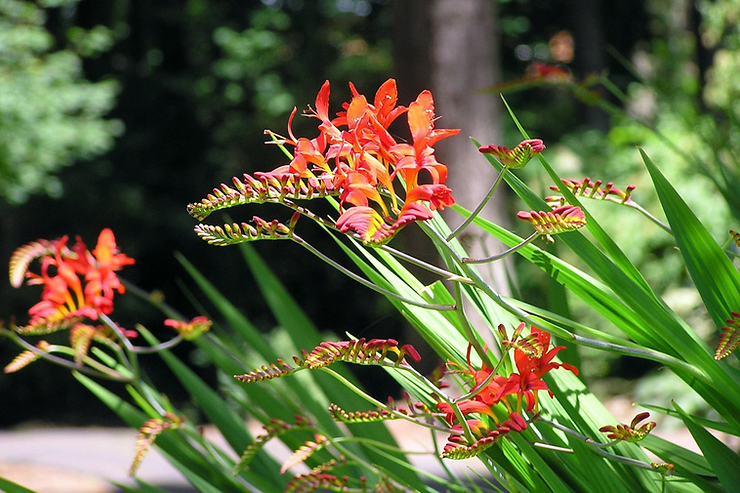
These exotic looking plants comes in colors from fiery scarlet, red and orange to yellow. The bulbs produce sharp sword-like leaves with brilliant wands of tubular flowers. Tubular flowers attract hummingbirds.
Crocosmia bloom best in full sun but can tolerate partial shade. In fact, they will need partial shade if you are planting them in a hot climate with intense midday sun.
They prefer a fertile, humus-rich, well drained soil. Crocosmia do not do well in hot, dry soil.
Plant the Crocosmia corms two to three inches deep, with the pointy ends up, and spaced between six and eight inches. Remove spent flowers to encourage more blooms.
Anemone
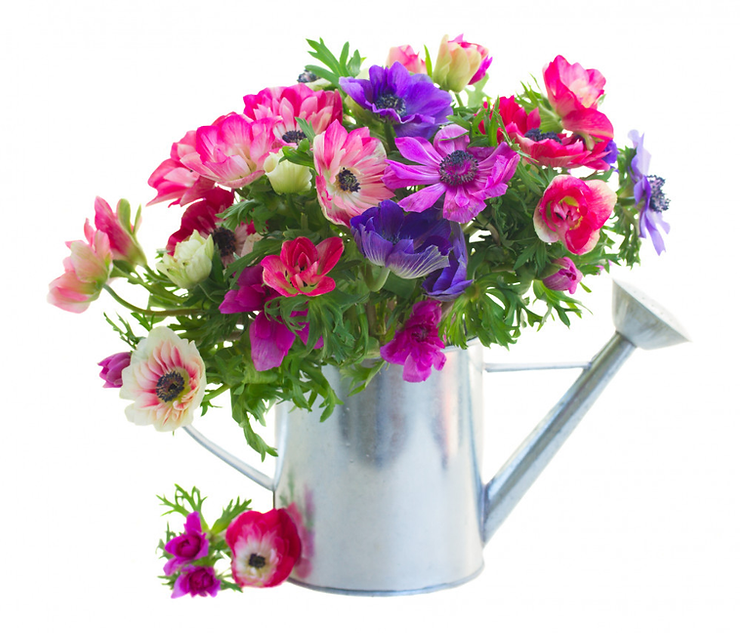
These dainty flowers, often referred to as Windflowers, make wonderful cutting flowers and appear to grow in vases even after cutting. If kept in maintained water, their blossoms will continue to open. Most varieties come in a singular blossom, but some have double flowers.
Anemones belong in the buttercup family Ranunculaceae.
They come in a variety of colors and grow beneath the ground, forming small colonies from rhizomes. Anemones can grow from six inches tall to almost six feet tall depending on the variety.
They thrive in up to four hours of full sunlight a day and enjoy moist well-drained soil.
Calla Lily
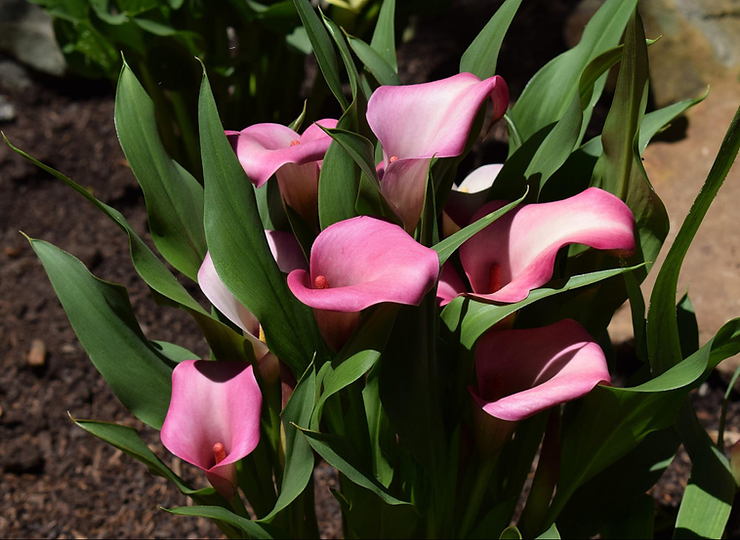
These distinctive flowers come in a variety of colors including white, yellow, pink, orange, purple and variegated. Calla lily rhizomes do not appreciate too much water, especially right after they are planted. Water them once a week unless you are in a drought or experiencing really hot temperatures.
In warm climates they prefer full sun to partial shade. However, in cooler climes, plant them in full sun. Their flowers bloom in the summer season for six to eight weeks. After that, their leaves will yellow and fade until the plant goes dormant. Their rhizomes can remain in the ground if you live in hardiness zones 8-10. In colder areas, dig up the rhizomes and store them for the winter.
Calla lilies prefer moist well drained soil, but not soil that will remain soggy. They can be planted in pots as long as the pots are 10 to 12 inches in diameter so as to allow for growth.
Canna Lily
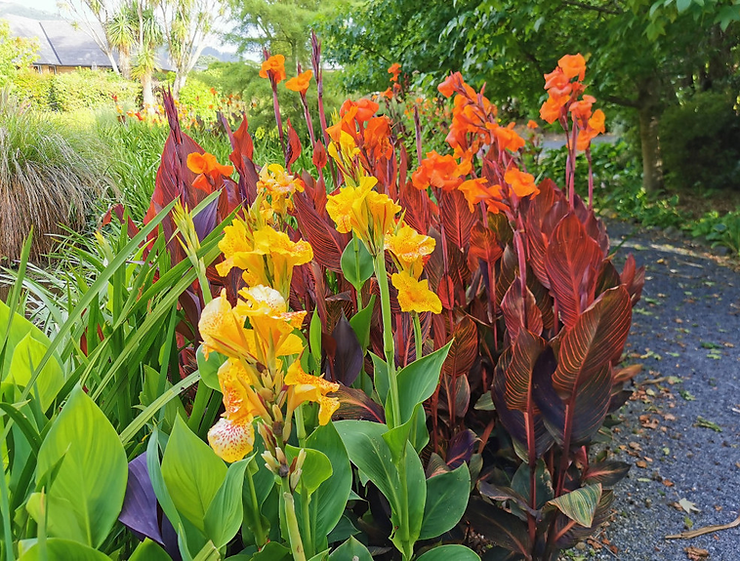
These beautiful, majestic, tropical-like flowers bloom for three to four months from mid-summer to fall. They grow from a rhizome style bulb and do well in rich, moisture retaining soil.
The flowers of Canna Lilies range from pale-yellow or orange, to blood-red, and all shades in between (salmon, apricot, and pink). Canna Lilies have banana like leaves that encircle the flowers in beautiful striated shades of color.
Canna lilies will thrive in full sun to part shade. They will need at least four hours of full sun to bloom. They also enjoy water and need consistent watering throughout the growing season.
====<Click Here for Bulbs From Nature Hills>====
Flower Bulbs – Spring Planting, Final Thoughts
There are many kinds of flowers that grow from bulbs that can be planted in the spring. These are just a small sampling of the flowers you can choose from. Take note of the water, sun, and soil requirements, follow these directions throughout the growing season, and you will be rewarded with an abundant showing of beautiful, colorful flowers.
I hope you enjoyed this post. Please leave a comment below and please share this and other posts to your friends and family.
Happy Gardening!
Nina
bestgardeningforbeginners@gmail.com

